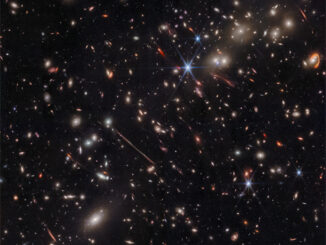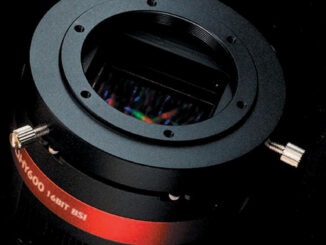President Biden will unveil the first colour image from the James Webb Space Telescope Monday at 10:30pm BST (2130 UT / 5:30pm EDT) at the White House, heralding the end of tests and checkout and the beginning of science operations by the world’s most powerful space observatory. You’ll be able to watch the unveiling event live on this page.
NASA plans to release additional “first light” images Tuesday, photos designed to show off Webb’s ability to capture light from the first generation of stars and galaxies, to chart the details of stellar evolution, from starbirth to death by supernova, and to study the chemical composition of exoplanet atmospheres.
Launched on Christmas Day, Webb is stationed in a gravitationally stable orbit nearly a million miles from Earth. For the past six months, engineers and scientists have been working through a complex series of deployments, activations and checkouts, fine tuning the telescope’s focus and optimising the performance of its four science instruments.
The targets for Webb’s first public images include:
- The Carina Nebula: A vast star-forming region in the constellation Carina some 7,600 light years from Earth that’s four times as large as the Orion Nebula. The Carina Nebula is the home of the most luminous known star in the Milky Way as well as the Eta Carinae binary system, which includes a massive sun expected to explode in a supernova blast in the near future (astronomically speaking).Southern Ring Nebula: An expanding cloud of gas a half light year across that was ejected from a dying star. Relatively low-mass stars like Earth’s sun will end their lives by blowing off their outer layers, forming so-called “planetary nebulas” while their cores shrink and slowly cool.
- Stephen’s Quintet: A collection of five galaxies in the constellation Pegasus 290 million light years from Earth that was discovered in 1877, the first such close-together grouping of galaxies to be detected. Four of the five galaxies are gravitationally interacting in a slow-motion merger.
- WASP-96b: An unusual cloudless exoplanet 1,150 light years away that’s about half the size of Jupiter, orbiting its sun every 3.4 days. By spectroscopically analyzing light from the parent star as it passes through the exoplanet’s atmosphere on the way to Earth, astronomers can tease out details about its chemical composition.
- SMACS J0723.3-7327: The combined gravity of countless stars in huge galaxy clusters like this one can as a powerful lens if the alignment is just right, magnifying the light from more distant objects in the far background to provide a deeper look back across space and time than would otherwise be possible.



